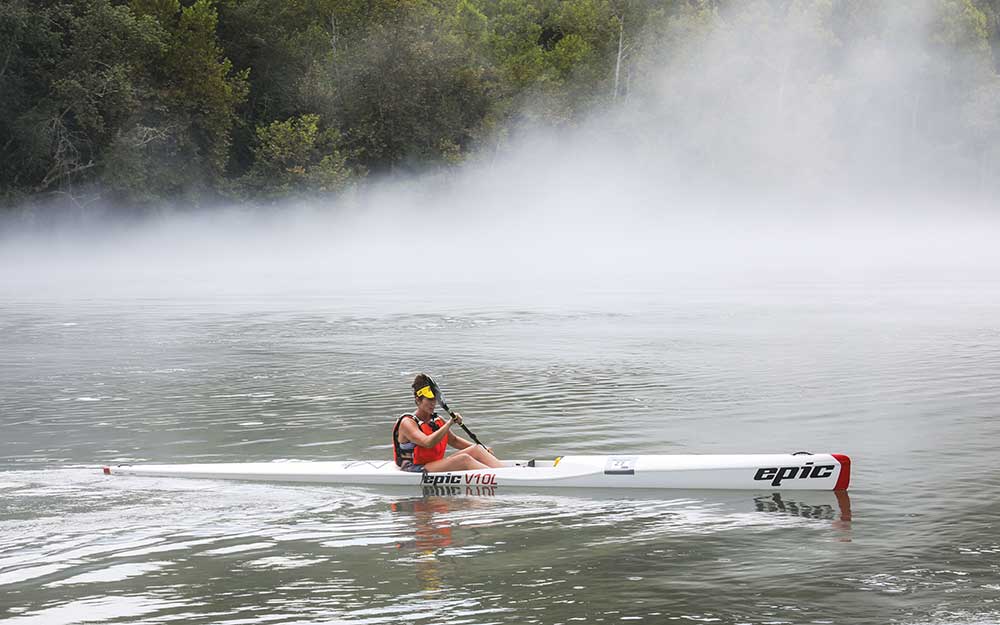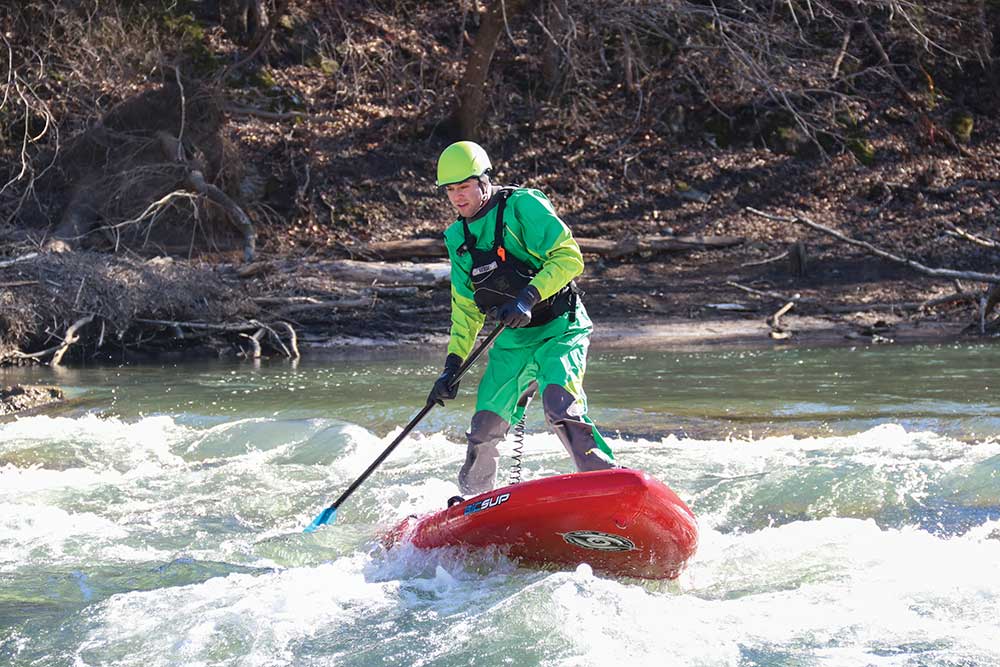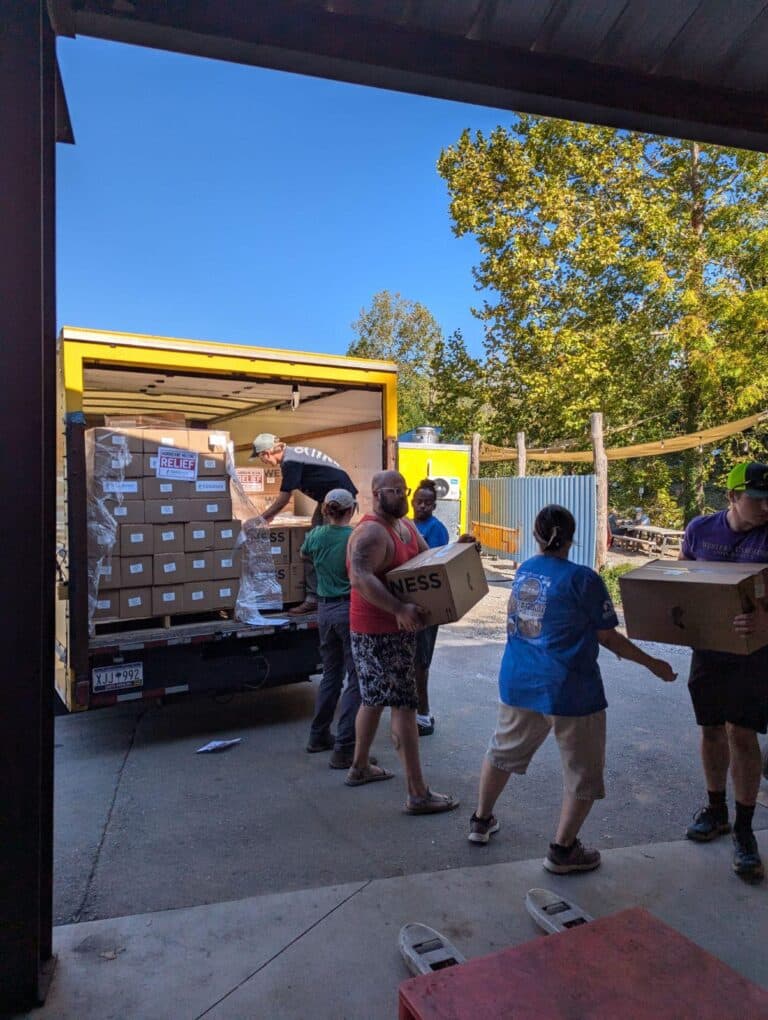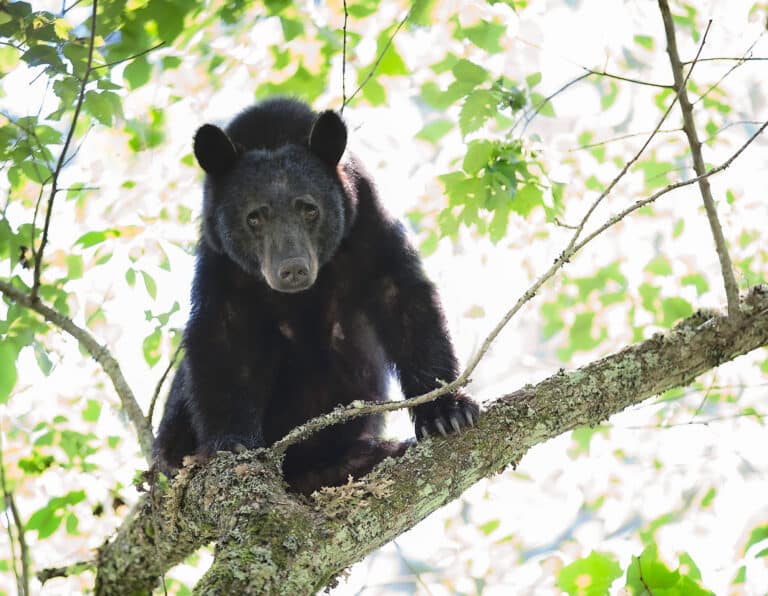When you think about paddling in the Mid-Atlantic and Southeast, rivers like the Gauley, James, Nantahala, and Chattooga get a lot of the love.
While these rivers offer paddlers of all types epic adventures and scenic views, they are not always the most accessible rivers.
“It doesn’t always have to be extreme,” said paddler Angel Verde. “You can have something that’s just fun and gets you out there. It’s a matter of taking advantage of your own sense of adventure and going for it.
As these paddlers can attest, the lesser-known rivers have just as much to offer if you’re willing to take the time and put yourself out there.
A River Runs Through Downtown
After leaving his job in international logistics, David Hennel and his wife moved to Waynesboro, Va. where he is now a high school teacher.
“We chose Waynesboro because I’m an outdoor junkie,” he said. “I came through hiking years ago. We decided this would be a nice place to kind of chillax for the remainder of the years. You’ve got the busy Appalachian Trail. But if you want to avoid crowds, you go to the west end of the valley and nobody’s hiking the trails over there.”
Located at the southern terminus of Shenandoah National Park, Waynesboro is less than five miles from where the Blue Ridge Parkway and Skyline Drive meet. Flowing right through town, the South River is even more accessible to anyone looking to get outside.
“I paddle like some people go for a walk,” Hennel said. “As a small river, the South is not really a threatening river whatsoever. It’s really just a delightful river to relax on but yet it still has enough rapids in a few spots that make it a little more exhilarating. The fact that it’s close makes it that much better. It doesn’t eat up all your time. My day teaching ends at 3:15, so I’m meeting up at the takeout at Rife [Park] at 3:40 and I’m home before my wife is from her five o’clock get off work thing.”
When the weather is nice and river conditions are right, Hennel said he will sometimes paddle three to four times a week.
“Every time I go down that river, I say to my paddling buddy, ‘We are so spoiled,’” Hennel said. “We really are. I paddle more than anybody I know just because the river is in my backyard.” Since moving to the area 15 years ago, Hennel has started to see more locals taking an interest in the river.
“At first it was like I owned the place,” he said. “I wouldn’t see anybody. Occasionally you’d get some other hardcore paddlers that would show up when the water was real high.”
Today, Hennel runs the South River Paddler Facebook page where other local paddlers detail river conditions, organize river cleanups, and plan group paddles.
The community is starting to see the river as another amenity that could be developed into an economic driver. The river already connects the city’s five major parks with boat ramps at each location for easy access.
“There are some people who think we’re going to bring manufacturing back into the Waynesboro area,” Hennel said. “I’m seeing the students, the future labor force, and I really don’t see us heading in that direction because we don’t have the labor for that type of economic activity. But I do see that we have a lot of really great outdoor and historical amenities that we have to offer. The South River is definitely one of those.”
Dwayne Jones, the director of Waynesboro Parks and Recreation, said he too has seen a change in how locals view the South River since he started with the department 25 years ago.
“Folks looked at it as a negative aspect because properties were flooded,” he said. “Ideas began to change, slowly over time, that the river could be an asset to the city and its community. In the last five to seven years in our department, we have been making a concerted effort to put people on the river.”
In addition to adding more boat ramps along the river, the city is building a paved greenway that follows the river and connects the parks. The city is working to get the four mile stretch of river that runs through town designated as a scenic river.
During the summer months, the parks department offers a kayak rental program on weekends. For a low cost, people can get on the water and paddle around Ridgeview Park. Occasionally, they also provide guided trips down the river for paddlers who are not as comfortable going out on their own.
“When we take people down the river, they experience the city from a whole different perspective,” Jones said. “You experience Waynesboro’s industrial heritage because you pass the old DuPont plant. You drift in and out of neighborhoods. Then you go into forested areas adjacent to our parks, and you can’t tell you’re in the city.”
Waynesboro’s industrial heritage is one of the reason locals stayed away from the river for so long. In the early 1900s, mercury from the DuPont plant made its way into the river through soil erosion. For decades, it went untreated.
“That mercury binds with the soil particles,” Jones said. “It gets into the snails. The fish eat the snails, the birds eat the fish. So, it quickly gets through the food chain.”
Since the 1970s, the EPA and Virginia Department of Health have warned people not to eat fish caught from the South River.
As part of the legal settlement, DuPont is now testing the river to find the highest deposits of mercury and removing layers of soil for treatment for two miles of river on each side of the plant. They are in the third phase of the remediation project focused on restoring the river and habitat, which includes fishing access points in the parks.
A River Upgrade
For paddlers looking for a little more than a float down the river, a group of paddlers are working to install a surf park on the South River near North Park.
When Angel Verde moved to the Shenandoah Valley, he started exploring the area for places to paddle.
“I would just drive,” he said. “I started finding all of these stretches of river and the South River was one of the first ones I explored. I started out downtown and then I found out there were other parks and boat ramps downstream. It seems like in the last few years, just out of dumb luck, the same time I’ve been exploring and paddling this river more, the city and Parks and Rec is putting more time and effort into it. People don’t realize that these boat ramps are here and there’s not a lot of public knowledge about it.”
A friend of Verde’s noticed a naturally occurring wave on the river where they could surf on their standup paddleboards and kayaks.
“There were some small things that I did to it after starting to paddle there frequently like moving large rocks that could interfere with the main space of the wave or could be foot traps,” Verde said. “If I was going to be encouraging people to come to this section to paddle, I wanted to make sure it was safe.”
Verde enlisted the help of other local paddlers to help him move some of the larger rocks. Within the last few months, he has started meeting with other community members like Hennel and Jones to find funding for other improvements to the wave park.
“It’s probably an eighth of a mile from the first feature to the last wave,” he said. “So, you have this large section of river that sits right along North Park. We would be taking advantage of the grade of the river that’s already established there and making those features more prominent. Such as putting in eddies and creating a riverbed surface that actually generates a more usable rapid. It’s really taking advantage and very carefully taking control of what the river is doing in a place where it’s already ideal for these kind of features without causing drastic interruption.”
Since there is no money for a project like this in the city budget, these paddlers are looking to the community. Verde has already spoken with engineers from the McLaughlin Whitewater Design Group about the logistics of putting in a wave park on the river.
“We could get a few more features in there that would allow people to work on catching eddies, work on their surfing, and getting to play in the water,” Hennel said. “We don’t have enough for some major whitewater aspect, but we do have enough drop where we can accommodate some features that would allow especially the beginners and intermediates to come and actually improve their game.”
A surf park like this, which are typically found on larger rivers like the Gauley or James, would be one more amenity for locals and a draw for people who live farther away.
“On the industry level, the most high-profile river waves are these big, high flow river waves,” Verde said. “They are very high performance and the learning curve to be able to actually surf the wave that big is a pretty steep entry point. These are meant for experienced paddlers and river surfers or people who are willing to just get beat up until they learn how to do it. Whereas a wave on a river that flows like the South River does has a much broader entry level. You can take kids out onto a wave that flows that low or tube on a wave that low. It’s approachable in a broad sense.”
Ultimately, Verde hopes this project will encourage more paddlers of all skill levels to explore the area they live in.
“Rivers like the South River are really prime candidates for bridging that gap between something approachable that people can learn the skills that they can then translate to larger, more aggressive man made or natural features,” Verde said. “It’s really trying to facilitate and build the community to a broader audience versus just catering to the diehards.”
The Sister River
Not too far from Waynesboro and the South River, volunteers with the Friends of the Middle River are facing a different kind of access problem.
“There are no public access sites anywhere on our river,” Kate Guenther said. “It is completely privately owned. A lot of people don’t know about the river because they can’t get to it.”
In 2010, Friends of the Middle River formed in response to a Virginia Department of Environmental Quality report that stated the Middle River was impaired. Guenther is the organization’s watershed administrator and only paid employee.
“We’re all agriculturally based,” she said. “We don’t have any big urban areas on our river or industry, unlike the South River that has all sorts of fallout from industry. But we have the fallout from agriculture. We have increased E. coli bacteria in the river from cows being in the river, increased sediment in the river from run off and farm practices, and increased nitrogen from farm practices and fertilization practices.”
In addition to organizing water quality testing and river cleanups, the Friends of the Middle River started a river access program to address the lack of public land along the river.
“We coordinate between private landowners who are willing to have people come onto their property just so that they can put in and take out their boats on the river,” Guenther said. “Our program is a voluntary thing where certain landowners who are okay with people coming down are listed. If people sign up for the program, they of course have to agree to be nice to the landowners and the land, take care of it, and follow all of the rules.”
In its first year, seven private properties have been added to the program and 100 participants registered from around the area.
The program is free but does require registration to participate. Once registered, participants receive a placard for their car window. Whenever a paddler wants to use one of the private properties as a put in or take out spot, they have to make arrangements with those specific landowners
“People who are local around here really do seem excited about it,” Guenther said. “This opens up a new venue for fishing and boating that was completely inaccessible before. But it’s something you do have to plan a little bit in advance to make those connections with the private landowners for permission.”
The Middle River runs 70 miles in Central Virginia before joining with the North River to form the South Fork of the Shenandoah River. With the private properties currently signed on, 44 of those miles are available for paddling with put ins and take outs.
“When we list a private property as an access point, we’re going out and scouting it,” Guenther said. “We’re making sure that you can pull in there and park. So, these are pretty accessible sites, but they’re not developed boat ramps.”
During the summer, the Friends of the Middle River organize group trips on the river.
“The purpose of those float trips really is to make it easy for people to use this river,” Guenther said. “For people who feel like they need a little extra help getting used to going onto private land, they can join our float trip and actually see the put in and take out in a facilitated way. Hopefully once they’ve done it once, they’ll feel comfortable initiating it themselves down the line.”
As the program continues to grow, Guenther said they will continue to look for more landowners to partner with to increase the river’s accessibility.

Calling All Paddlers
Instead of focusing on a singular body of water, the organizers behind the Kentucky Waterman Series aim to introduce paddlers to a variety of waterways through a paddle race series.
Gerry Seavo James started the series as a part of the Explore Kentucky Initiative, something he started in college to promote outdoor recreation and conservation around the state.
“I don’t see these events as just events,” he said. “I see them as creative placemaking of social art. We’re trying to shift people’s mentalities about rivers. Get them to love them and see them as living, breathing beings to be taken care of. We’re trying to influence safety on the water by wearing your PFD. We’re also trying to promote public health, family, and community. And then we’re also trying to drive economic development.”
The initiative began on social media through Instagram, Facebook, and Tumblr. As more people began to connect with the outdoors through Explore Kentucky, James started offering guided hikes and paddles to encourage more people to get outside.
As someone who had been paddleboarding for years, James got involved with the local paddling community and promoting the sport.
“This guy named Bob Diehl reached out to me,” he said. “We call him the SUP Master of Kentucky. He invited me to be a part of the event committee for Riverthon to help with marketing, logistics, and stuff like that. From that event, we got over 150 paddlers from all around the country. I thought, ‘What if we do a series?’”
From there, the idea took hold. Now in its third year, the Kentucky Waterman Series consists of 13 races in 4 states. A portion of the racing fees go towards various organizations like We Want to Play and Kentucky Heartwood.
Some of the events, such as the Bluegrass River Run and Outdoor Recreational Festival, James puts on through the Explore Kentucky Initiative. The other races are put on by various organizers who partner with the Waterman Series. Each race uses the same class and point systems so that paddlers know what to expect.
“Essentially, we’re like a union,” James said. “We’re all partnered together which helps amplify these events more. I couldn’t do all of this stuff without the communities I work with, the volunteers, and friends. They are really integral to these partnerships.”
Wendy Scott, a paddleboarding instructor in West Virginia, caught the racing bug in 2017.
“I was scrolling through Facebook and saw an ad for a Kentucky Waterman Series race,” she said. “The more I read about the series, what Gerry had been doing, how the points all worked together, and how you get several races throughout the year, that really sparked my interest as something I could do for a long time.”
After attending several races in the Waterman Series, Scott said she and a friend were inspired to start their own race. In May, they held the Inaugural Almost Heaven Paddle Battle on Summersville Lake in West Virginia as a part of the series.
“It’s been inspirational in helping other communities grow economically by bringing people to our area,” Scott said. “I told Gerry I want to be like him when I grow up, even though I’m older than him. I’m inspired by his passion for the areas he’s trying to promote and the way that it brings so many people to areas they may have never explored.”
With multiple races, the series encourages paddlers to explore different rivers and parts of the state throughout the year.
“Kentucky has 120 counties,” James said. “The big thing I’ve noticed with tourism is that often it focuses on the same areas. I would be doing a disservice if I didn’t try to figure out how I can highlight more communities.”
But these events are about more than just the races. Each event has a float component where paddlers can choose to discover the waterway without the competitive aspect of the race.
“The idea was not just to attract paddlesports aficionados, but to also get the recreational paddlers out there,” Matt Walker said. “The idea is to get people to care about our waterways. It’s not just caring from the standpoint of hey, let’s go paddle and pick up garbage in the river. It’s our waterways are suffering. We need to look at the point source. We need to go to council meetings trying to get money for solid waste removal in our community so that it doesn’t end up in our rivers and streams.”
Walker works with James, helping to plan and operate the races. As the series becomes more popular, Walker said he sees the potential for these events to include a music or food festival component as a way to include even more people.
“I really think that it could illuminate so many other areas around the state that people are missing out on,” he said. “If the Kentucky River runs through Central Kentucky and dumps into the Ohio, and people overlook it as a resource, you can only imagine that they’re overlooking smaller, more intimate streams.”
The hope is that the more paddlers there are on the water, the more people there are caring about the water.
“We’ve got three million people here in Kentucky,” Walker said. “If we get half a million people out on the waterways and we get five percent of those people excited about conservation efforts for our waterways, then we’ve started making a difference. I think we get caught up in the excitement that this is a race series and we forget that the race series is actually an avenue for bigger, better things.”
More Backyard Adventure Rivers
- Stonycreek River (Penn.): There is something for everyone on the Stoneycreek River, including Class I-V rapids and a whitewater park in Johnstown accessible for beginners and tubers.
- Cacapon River (W. Va.): Escape from the city to this scenic river with 70 to 80 percent of this river surrounded by trees.
- Potomac River (D.C.): The Potomac, or the “Nation’s River,” is accessible from parts of Pennsylvania, Maryland, West Virginia, and Virginia, flowing through our nation’s capital into the Chesapeake Bay.
- Edisto River (S.C.): From the rolling hills of Piedmont to the marshes on the coast, the Edisto River takes paddlers through the southern part of South Carolina. Its dark color comes from the tannins that leak into the water from decayed leaves and other plant matter.
- Flint River (Ga.): According to American Rivers, the Flint is one of only 40 rivers in the country to flow for more than 200 miles without a dam.
- Neuse River Blueway (N.C.): The Neuse River connects Raleigh to New Bern and is part of the Mountains-to-Sea Trail’s paddle route.
- The Parklands of Floyds Fork (Ky.): Floyds Fork connects four major parks in Louisville. Within these parks, you’ll find miles of trails for hiking, biking, fishing, and paddling.







